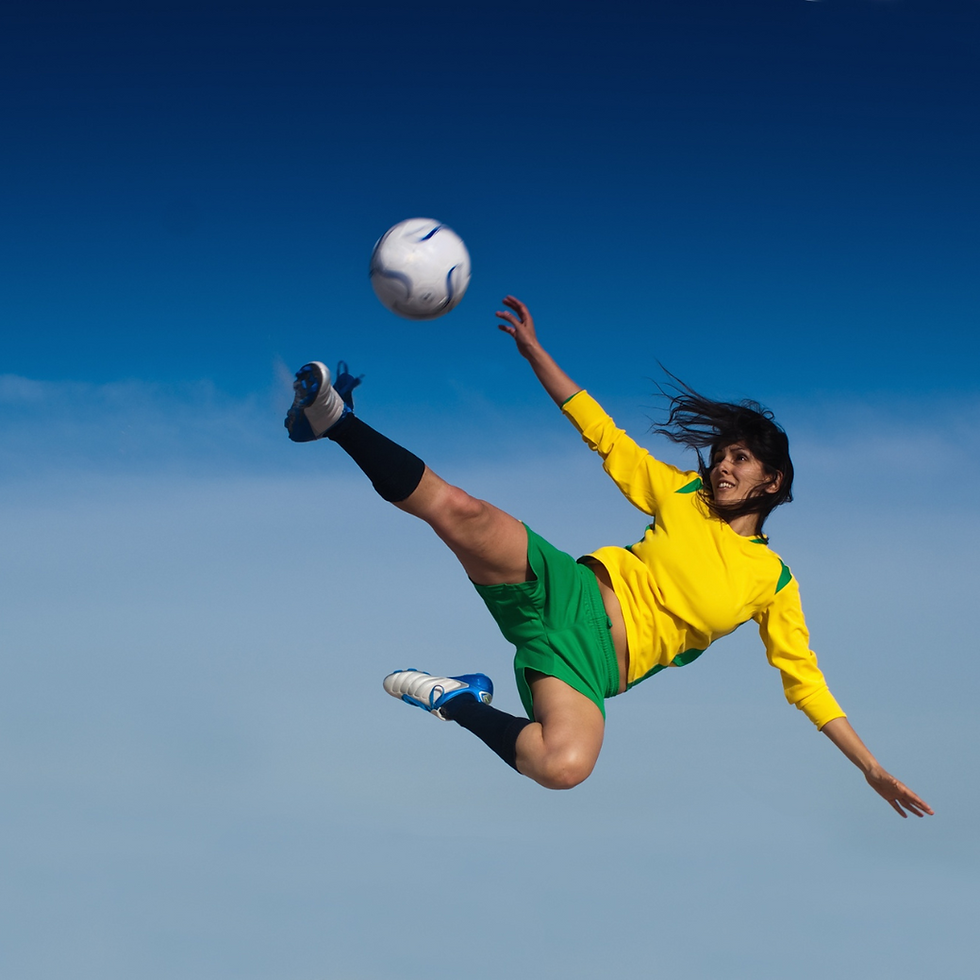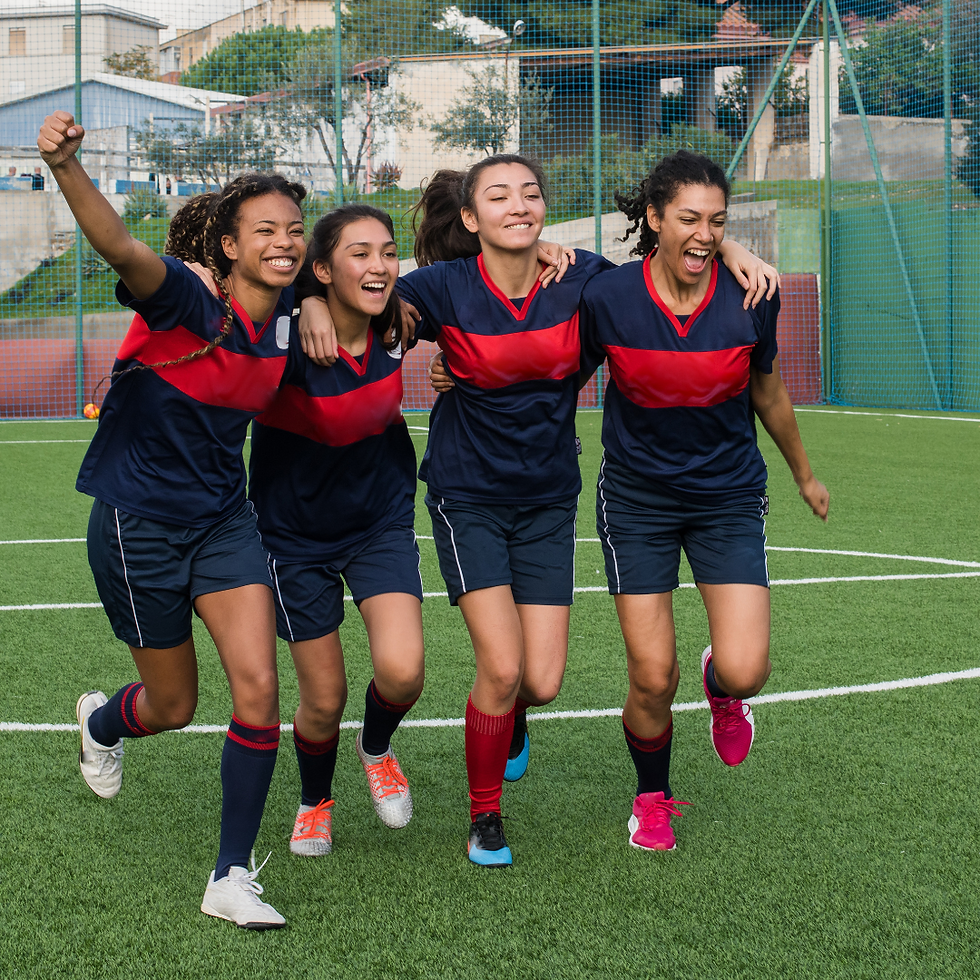From fabric to field: The evolution of women’s football apparel
- Dr Katy Griggs

- Jul 19
- 4 min read
By Katy Griggs, Principal Lecturer in Sport Engineering (Department of Engineering, Nottingham Trent University)
With the UEFA Women’s Euro 2025 in full swing, Dr Katy Griggs of Nottingham Trent University explores the evolution of women’s football apparel and highlights the crucial role brands play in designing kits that empower the next generation of female athletes. As a member of the Women in Sport theme within the university’s Sport, Health and Performance Enhancement (SHAPE) research centre, Katy’s current work focuses on how clothing and equipment interact with users—particularly women and individuals with disabilities—ensuring that clothing/equipment is inclusive, functional, and performance-enhancing.

Over the last seven years, the number of women and girls' football teams in England has more than doubled. As women’s football continues to surge in popularity and with the upcoming UEFA Women’s Euros in sight, what players wear on the pitch has become an important topic. Sportswear is more than merely aesthetics or branding, it enhances performance, comfort and identity. For decades, however, women players had to wear kit designed and made for men. Except women aren’t small men. Today, sports brands have finally switched their attention to producing garments that put females at the forefront of the design and cater for female needs.
Evolution of female sportswear: A brief history
Following the lifting of the FA’s ban on women playing on affiliated pitches in England in 1971, the growth of women’s football in the UK started to blossom. The skirts and bloomers worn by female football players in the 1920s and 1930s were replaced by shorts and jerseys resembling the men’s kit. But they were simply smaller versions of the men’s kit and hence were ill-fitting and not designed for the needs of the female players.

Players reported a fear of sweat marks and visible blood stains on shorts during menstruation when playing in light colours, with similar concerns raised by female athletes in other sports, such as tennis and rugby. This resulted in the England team and various club teams switching to darker coloured shorts . It was not only colour that concerned players, but also the length and fit of the shorts, perceived by some to be exposing or sexualising them compared to their male counterparts.
It wasn’t until the FIFA 2019 Women’s World Cup that bespoke fitted women’s kits were available, designing kits with fit, performance and comfort in mind. Optimising materials and female-specific cuts were developed to support the athletic performance of the players.
Functionality meets innovation
Performance-driven designs are now commonplace in sportswear, with technological developments in fabrics, design innovations and manufacturing processes supporting the growth of the sports apparel industry. How a sporting garment performs is determined by a complex interaction between thermal, moisture and mechanical properties. This results in sportswear garments that enhance breathability, performance, comfort, durability and aesthetics.
After scoring the winning goal for England in the Euro 2022 final, Chloe Kelly removed her shirt and sprinted across the pitch in her sports bra. An essential piece of sportswear for any female athlete, but unfortunately an item which is so often poorly fitted and misunderstood by the wearer, resulting in discomfort and pain. Professional football players have been reported to experience a high prevalence and severity of breast pain, have average/below average breast/bra knowledge and wear the wrong size sports bra. Although no data currently exist on the breast support requirements for female football players, based on a 10-km run with a stride length of 1 m, an athlete would experience 10,000 breast bounces, reinforcing the importance of a correctly fitted and comfortable sports bra. Implementing breast health education initiatives aims to improve players' knowledge, reduce the amount and severity of breast pain and enhance their sporting performance.
Traditionally, women wore male football boots to play, but due to anatomical differences of the foot, women often reported discomfort, poor fit and were at an increased injury risk as a result. High rates of anterior cruciate ligament (ACL) injury are a hot topic in women’s football , with the incidence rate of ACL injury in women two times higher than their male counterparts. In recent years, major brands, such as Puma, Adidas and Nike have manufactured football boots tailored specifically to the size and shape of women’s feet and differences in traction for female players. However, their usage by grassroots to professional players is yet to be determined. Research projects, such as ‘Project ACL’ hope to identify best practice and solutions to reduce the risk of ACL injuries in female football players, which may include identifying the impact of these female specific designs on ACL injury incidence rate in the coming years.
The Next 90 Minutes and Beyond
With the Euros and the impact this event will have on the growth of the game, kit innovation must also grow and be accessible for players at grassroots to the professional game. Female sportswear should no longer be an afterthought or a smaller version of the men’s kit but be female-centred and female-focused. Sports clothing brands have a responsibility to continue to improve the kit they produce to empower the next generation of female players to dream bigger, run faster and play harder.
Blog editor: Dr Tess Flood
Blog admin: Dr Jacky Forsyth




Comments